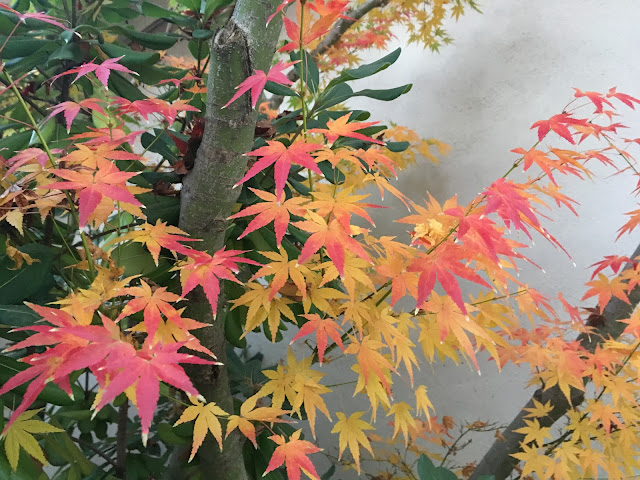Sacramento Leaf Season brings avalanche of garden gold
 |
Beautiful on the tree, but gold on the ground: Leaves are a gift to gardeners. (Photo: Kathy Morrison)
|
Don't just rake and toss; fallen leaves make great mulch and compost
By Debbie Arrington
In the City of Trees, October is either a time of dread or opportunity. It's Sacramento Leaf Season.
Every puff of breeze brings down more leaves as our urban forest sheds its foliage. While evergreens keep their needles, deciduous trees such as birches, sycamores and elms seem to rain down golden leaves.
That fall foliage looks pretty up on its branches. Off the tree, it's a mess.
Instead of an avalanche of green waste, think of it as garden gold. Smaller leaves make excellent mulch; just rake and place 2 to 3 inches deep around trees and shrubs.
 |
Smaller leaves can be used as mulch as is;
run the lawn mower over larger leaves first.
(Photo: Debbie Arrington)
|
Or chop larger leaves with a lawn mower (a couple of passes usually is sufficient) and use as mulch. It will last through the winter, keeping down weeds while retaining even soil moisture.
That's what nature does with its fallen leaves. They decompose around the trees, revitalizing the soil while protecting tree roots.
Bill Maynard, Sacramento's community garden coordinator, recommends using fallen leaves for making compost.
"Brown" ingredients are necessary to make good compost, Maynard explained. He uses the lasagna method of compost making, layering green materials such as freshly cut grass or spent vegetable plants with "browns," such as dried leaves. That helps create an environment for rapid breakdown of the bin's ingredients into usable compost.
"You need browns in compost," he said. "Those are usually dried leaves or straw bales." The leaves don't require a trip to the feed store.
Besides adding nutrients, the brown ingredients serve another important role.
"Always top the compost with a brown layer," Maynard said. "That keeps flies down."
Maynard sets aside bags of dried leaves for later use in spring when brown material is scarce. "You need brown material year round for composting," he said. "In the spring, you have lots of green but no brown. So, save some leaves."
Those heaps of leaves now represent future fertilizer and potential savings. Go ahead and fall!


Comments
Post a Comment